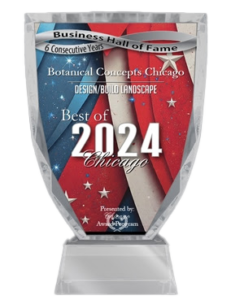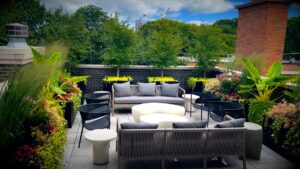Yards that are located in the shade present a challenge for landscaping, but it is possible to have a beautiful yard and lush garden even if there is little sunlight in the yard. The key is to understand which perennials and annuals perform best in low sunlight conditions and to optimize their growing environment for your shade garden.
The first step is choosing the right plants. The experts at any garden center or nursery should be able to direct you to plants that are well-suited for shady areas. You can also look at the information on the plant’s labels. Most have symbols or wording that informs buyers about the plant’s requirements regarding sunlight. Primrose, foxglove, begonias, and astilbes are all shade-loving flowering plants that will brighten any dimly lit area of your yard.

You can also add light to shaded areas by using foliage plants. Hostas, heartleaf foamflower, coral bells, and Japanese forest grass all have interesting leaf textures and colors that can bring light to shady spots. Garden designers can create a sense of drama in low light areas by mixing light and dark colors and a variety of textures. False goat’s beard, coleus, mirror plant, copper plant, and heuchera are all plants that have leaves in unusual colors and shapes and do well in low sunlight areas.
Once you have selected the right plants for your shaded spot, you need to make sure that the new plants have optimal growing conditions. Soil in shaded areas can be problematic, especially if a walnut tree is creating the shade. Walnut tree roots release a toxic chemical called juglone that, in effect, poisons the soil and kills many plants. If you have a black walnut tree in your yard, this doesn’t mean you have to chop it down. There are some juglone-tolerant plants, such as ferns, ginger, asters, and bee balm.
Even if you do not have walnut trees to worry about, there are probably other types of trees and bushes that cause the shade. The roots of trees and bushes can be selfish and use up the nutrients in the soil, leaving the soil in poor shape for growing annuals and perennials. You will want to fertilize the soil in the spring, then add at least two more applications of fertilizer throughout the growing season. The fertilizer will help the plants get the nutrients they need without having to compete with nearby trees.
Soil for shaded plants should drain well. If your garden area has clay soil or sandy soil, you may want to add in compost, peat moss, or another type of organic material to improve the texture and drainage of the soil.
Lastly, you can incorporate permanent features in the shade garden to increase the visual interest. A comfy bench, a rustic stone path, a water feature, or a gazebo are all ways to make a shaded area more functional and turn a dark corner into a peaceful place of quiet solitude or a fun spot for entertaining.


